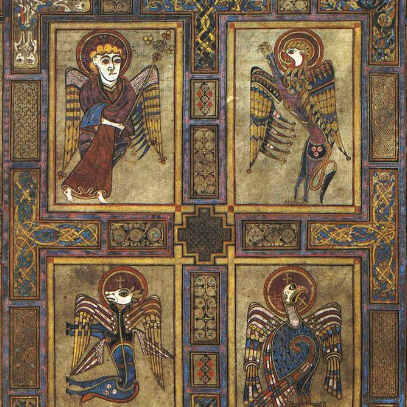Dialectica
An Index of Logic
(and Fallacies)

By Gabriel Blanchard
It Is Never Too Late to Begin
Grammar, dialectic, and rhetoric: these are the backbone of the classical model of education. Alas, not everyone gets this kind of education; but what’s to be done?
In the pursuit of wisdom, it is never too late to begin. We recently concluded a series on deductive logic, which followed a series on informal fallacies. As with the Author Bank and our series on the history of ideas, we wanted to provide our readers with a handy index to navigate these posts—and here it is! Posts from the series on logic are listed in the “Syllogisms” column, while those from the fallacy series are listed in the “Sophistries” column.
Speaking of the history of ideas, we have pulled in relevant posts from our “Great Conversation” series, which include further suggested reading. These are listed topically, following the posts from the logic and fallacy series that they help elucidate.
The three series that appear in this index are abbreviated thus to save space:
BM—The Brain, a User’s Manual
GC—The Great Conversation
SS—Sorting Through Sophistries
הוּא הָיָה אוֹמֵר, אִם אֵין אֲנִי לִי, מִי לִי. ... וְאִם לֹא עַכְשָׁיו, אֵימָתַי:
[Huu' hayah 'awmêr, 'im 'êyn 'ànî lî, mî lî? ... V'nim lò' ṛakh'shâyw, 'êymâthay?]
If I am not for myself, then who shall be for me? ... And if not now, when?Rabbi Hillel the Elder, Pirqey 'Avoth ["Sayings of the Fathers"] I.14
Syllogisms
Introductory Essays
- BM: What Is Logic?
- GC: Dialectic
- GC: Education, Part I
- GC: Education, Part II
- GC: Induction
- GC: Knowledge
- GC: Language
- GC: Logic
- GC: Science
- GC: Truth
- GC: Wisdom, Part I—Knowledge
How to Use Words
- BM: How to Define Things
- GC: Definition
- GC: Sign & Symbol, Part I (signs)
- BM: How to Talk About Things, Part I—Substances
- GC: Universal & Particular
- BM: How to Talk About Things, Part II—Categories
- BM: How to Talk About Things, Part III—Relations
- GC: Sign & Symbol, Part II (symbols)
Aristotelian/Term Logic
Stoic/Propositional Logic
Sophistries
Introductory Essays
Verbal Fallacies
- SS: The Ambiguous Fallacies [ambiguity, equivocation, and the motte-and-bailey]
- SS: A Pair of Pseuds [composition and division]
- SS: Disfigures of Speech [misinterpretation of idiom]
- SS: Context Is King [selective use of evidence]
- SS: The Fleet of Theseus [paradox of the heap, ship of Theseus, liar paradox]
- SS: Four Knowledgeable Fallacies [observer effect, levels of precision, aribtrary epistemologies, Socratic fallacy]
- SS: The Sapir-Whorf Hypothesis [how language limits thought]
Emotional Fallacies
- SS: Appeals to Emotion (Aren’t Always Bad)
- SS: Pathetic Appeals (That Are Bad) [ad misericordiam, ad desiderio, ad populum, ad ridiculum, ad baculum, etc.]
- GC: Emotion
- GC: Rhetoric
Credibility Fallacies
- SS: Mental Solitaire [the Dunning-Kruger Effect]
- SS: Appeals to Authority
- SS: Enter the Sea Lion [sea-lioning]
- SS: The Liberty to Lie [political versus moral rights]
- GC: Authority (six-part series)
Abusive Fallacies
- SS: The Hominem Family [ad hominem/insults]
- SS: Tu Quoque, Brute [tu quoque/charges of hypocrisy]
- SS: A Drop of Poison [poisoning the well]
- SS: The Scarecrow and the Steel Man [straw-manning]
- SS: Godwin’s Law (and Other Corks)
Stupid Fallacies
- SS: The Know-Nothings, Part I [ad ignorantiam, false dilemma, fool’s-golden mean]
- SS: The Know-Nothings, Part II [errors about probabilities or statistics]
- SS: Fallace E. Coyote [slippery slopes]
- SS: Riders of the Viciouscycle, Part I [bald assertion, circular reasoning]
- SS: Riders of the Viciouscycle, Part II [complex questions, question-begging]
- SS: Five Words to Watch Out For [the “obvious,” “common-sense,” “natural,” “latest,” and “fallacy” fallacies]
- SS: Dishonesty in Detail [cold reading, “magician’s choice,” and Barnum statements]
Gabriel Blanchard is CLT’s editor at large. He lives in Baltimore, MD.
If you enjoyed this piece, well, you’ve got your work cut out for you! Thank you for reading the CLT Journal—have a great weekend.
Published on 31st January, 2025. Page image of The School of Athens (1509-1511) by Raffaelo Sanzio da Urbino, a.k.a. Raphael. Hebrew text from the Pirqey ‘Avoth obtained from Sefaria. This post was updated on 8th May 2025 to correct a mistake in the transcription of the Hebrew.